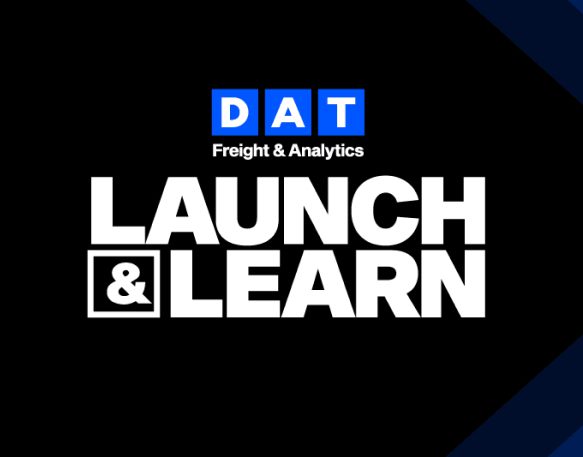Shippers have been evaluating private, dedicated and for-hire fleet strategies more frequently during the last two years of freight market volatility.
Freight demand has far outpaced supply during this period, and the trend continues. After record growth in spot market activity during Q4 last year, the number of van truckloads posted on the DAT Load Board network from December 2021 to January 2022 increased by 31.4%, giving for-hire carriers more pricing power. Some shippers have responded to this trend by adding more private and dedicated fleet capacity to ensure coverage and mitigate costs.
When the market softens, shippers will be looking more closely at transportation cost-saving options to reassess their fleet management strategies, when private and dedicated fleet capacity makes less sense for certain lanes. With the right data and tools, shippers can remove the guesswork from fleet management decisions.
Get the analytics needed to optimize your fleet management with DAT iQ.

Below is a synopsis of how shippers can analyze the relative costs of using private, dedicated, and for-hire fleets, as well as identify the potential for savings and confidently move forward with better options.
Balancing cost and service
Fleet utilization strategies are a balancing act for cost and service. Private and dedicated fleets offer a service advantage but come with challenges that relationships with for-hire fleets do not, such as long-term contracts, upfront financial commitments to buy or lease equipment, and operational considerations with managing drivers.
Control is the key difference between private and dedicated fleets. Shippers can utilize private fleet assets and drivers however they choose, but this benefit comes with operational headaches and risks of owning or leasing assets, managing the trucking operation, and employing drivers.
Shippers give up some control with dedicated arrangements, but they also offload administrative burdens by contracting with third-party carriers who provide the equipment, drivers and dispatchers.
Shippers will typically use dedicated and private fleets for lanes to move freight that is consistent, predictable, and at higher volumes. Short hauls with a radius of 200 miles or less tend to offer the best transportation cost advantages. From a service perspective, short-haul lanes often have time-sensitive delivery schedules that make it difficult for shippers to wait on for-hire carriers to accept loads.
For short-haul lanes, the fixed and variable cost structure of private and dedicated fleets is usually more competitive than rates of for-hire carriers that include a minimum daily charge. The costs are more predictable as well, especially for loads that have multi-stop deliveries, dwell time, and other factors that carriers bill as accessorial charges.
For longer-distance lanes, for-hire carriers have the upper hand due to a simplistic rate structure based on time and mileage between two points. Contracting with a for-hire carrier does not require an upfront capital expenditure or long-term commitment. Rates are pay-as-you-go, and what happens to the truck and driver after a delivery is of no concern to the shipper.
Shippers may use private and dedicated fleets for longer-distance lanes where they have opportunities to reduce transportation costs by filling empty lanes with backhauls. Dedicated contracts can include revenue-sharing agreements that allow carriers to get loads from their own company or third parties.
Shippers that operate private fleets with for-hire authority can fill empty lanes with backhauls to generate revenue, but this strategy also carries additional risks and costs from having to manage relationships with freight brokers, including billing and collections.
Fleet strategies
To analyze private, dedicated and for-hire fleet strategies, shippers can start by comparing the short-term variable costs of for-hire capacity with the longer-term commitments and higher upfront costs of private fleet or dedicated capacity.
This analysis can be supported by software tools that simulate mileages and utilization in each market where private or dedicated fleets will be located. Current market rate data can be added to the analysis to compare the fixed daily cost of dedicated capacity to the variable costs of for-hire truckload rates on the same lanes over time.
Benchmarking current and alternative fleet strategies will give transportation leaders an answer when executives ask how transportation costs and performance align with the freight market, and with industry peers. Crucial benchmarking data for this type of analysis is not available by using internal metrics alone.
Shifting capacity with agility
With the right data and analytical tools, transportation leaders can accurately and dynamically assess if they are using private and dedicated capacity in the right places. They can also determine where their networks can benefit from shifting private and dedicated fleet capacity to lanes that are bleeding money or having other difficulties.
Analyzing market data will help you justify current transportation spend and devise strategies to expand or contract private and dedicated fleets. You can also identify where to save money and maintain service levels by using for-hire capacity.
Additionally, shippers can determine where to utilize their own fleet capacity more effectively. Benchmarking private fleet costs with market rates can shine a light on where to shift capacity, as needed, to cover loads that fall through lane commitments with contract carriers.
By using rate analytics, for example, you might decide to utilize your private fleet capacity to cover a long-distance load, even if you do not have a backhaul. Given today’s spot market rates, it may be more cost effective to dispatch an asset that returns empty versus paying the market rate for a one-way move that could be more than double your fleet costs for making a round trip.
To learn more about how to use transportation analytics to benchmark and optimize your fleet management strategies, contact the transportation experts at DAT today at www.dat.com/shipperiq


